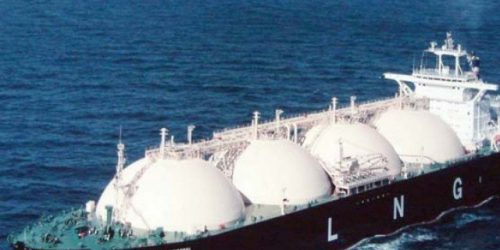The S&P Global Platts assessed daily LNG tanker charter rates have dropped to an all-time low of $25,000/d for an Atlantic Basin tanker just two months after touching an all-time high of $300,000/d in January. The effective round-trip cost for an Atlantic Basin spot charter is now just $15,625/d, given that the ballast charge has also declined to around 25%.
o put this in perspective, the previous low for Atlantic Basin charter rates was assessed last summer during the peak of US LNG cancellations, where the effective round-trip cost dropped to $19,500/d. The lower day rates have dramatically reduced spot tanker costs over the past 30 days, boosting prompt US Gulf Coast LNG netbacks from the TTF by around 50 cents/MMBtu, while the comparable netback from the JKM has now improved by around $1/MMBtu. These extremely low shipping rates should help keep US LNG dispatches high this spring, offsetting some of the recent weather driven price weakness observed at the tail end of winter.

Fundamentally speaking, the collapse in charter rates is due to broadly weakening global spot trade as markets transition their regular springtime demand lull, which has been exacerbated by a large wave of newbuild LNG tankers that were put on the water this winter. Furthermore, USGC forward LNG netbacks have favored deliveries to the TTF in April, which has likely led to US spot cargoes reorienting back to Europe and thereby consuming less tanker capacity.

The effective round-trip day rate of around $15,625/d barely exceeds the average daily OPEX of an LNG tanker, which we estimate to be around $10,000-$15,000/d, depending on the age and technologies employed by the tanker. This suggests that tanker owners are essentially setting day rates at cost.
On one hand, it might seem reasonable to assume that day rates are near a bottom. However, it is worth noting that in the short-run, most OPEX costs, such as salaries and insurance, are essentially committed fixed costs which cannot simply be canceled, month-to-month. Therefore, it is possible that day rates could fall below the daily OPEX for a short period of time if a tanker owner wanted to keep that tanker on the water and was concerned about keeping the tanker cool, while also anticipating market conditions will improve.
The extremely low ballast rates suggest ship owners are now offering steep discounts that might help fix idled tanker capacity along longer journeys to Asia through this lower demand springtime period. Supporting this theory, if we assume an exporter consumes only LNG boiloff for propulsion, the round trip freight cost to take a US LNG cargo to the JKM via the Cape of Good Hope is now roughly equivalent to the cost to take a US LNG cargo to JKM via the Panama Canal. Put another way, the incremental day rate and boiloff costs attributed to the roughly 26 additional voyage days to Asia via the Cape is roughly 26 cents/MMBtu, just 5 cents/MMBtu more than the fee at the Panama Canal, which stands at 21 cents/MMBtu.
However, unless Asia sends a clear price signal that it needs more LNG, forward netbacks still indicate that the TTF retains a roughly 33 cent/MMBtu premium compared with the JKM for a USGC loaded cargo in April. This would suggest that even with these fire-sale day rates, LNG may continue to target Europe for the next two months, which could keep pressure on already extremely weakened charter rates.





